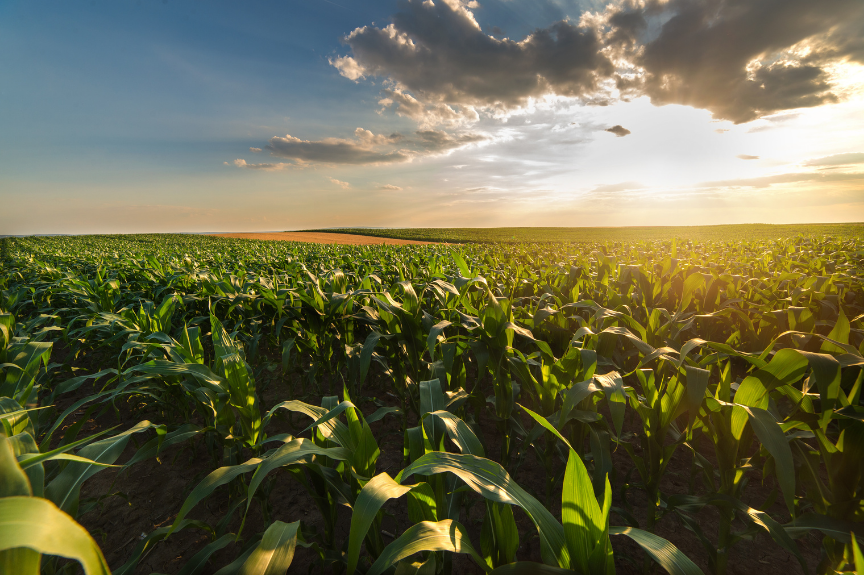
Global food security faces increasing pressure from population growth, climate change, and environmental constraints. With a projected global population of 9.8 billion by 2050, sustainable solutions in food production and agricultural development are critical. Mechanical engineering plays a pivotal role in transforming farming practices through precision agriculture, automated machinery, and robot technology to enhance crop yields, livestock management, and resource efficiency.
The decline of arable land, unsustainable farming processes, and reliance on traditional irrigation techniques further threaten food security. Advanced agricultural engineering introduces new technologies such as agricultural robots, artificial intelligence, and vertical farming to optimize soil quality, water management, and harvesting efficiency. These innovations not only improve farm productivity but also support sustainable agriculture, reducing dependence on pesticides, fertilizer, and excessive water resources.
This blog explores how mechanical engineers drive innovation in agricultural machinery and smart farming solutions to ensure a resilient global food system. By leveraging data-driven technologies and automated equipment, we can address the world’s food security challenges and create a more sustainable future for farmers and food production.
Table of Contents
- Traditional Farming Practices and Their Limitations
- Impact of the Industrial Revolution on Agriculture
- Emerging Challenges in Modern Agriculture
- Precision Agriculture: Concept and Necessity
- Innovations in Crop Production Technologies
- Innovations in Livestock Management Systems
- Automation in Crop Production
- In Livestock Management
- Eco-Friendly Machinery Innovations
- Resource-Efficient Technologies
- Impact on Global Food Security
- Increased Agricultural Productivity and Efficiency
- Reduction in Labor Costs and Dependence on Manual Labor
- Enhanced Ability to Monitor and Respond to Environmental Changes
- Improved Sustainability of Farming Practices
- The Future of Sustainable Food Production
- Emerging Trends and Technologies
- Long-term Implications for Global Food Security
- Challenges in Implementing Sustainable Agriculture
- Economic and Technological Barriers
- Policy and Regulatory Challenges
- Conclusion
- The Critical Role of Mechanical Engineering in Addressing Global Food Security Challenges
- Future Outlook on Continued Innovations and Their Potential Impact on Agriculture
Traditional Farming Practices and Their Limitations
Historically, agriculture was labor-intensive and dependent on rudimentary tools, limiting scalability and efficiency. Manual farming methods required extensive human labor and time, leading to inefficiencies and inconsistent yields. Traditional irrigation, planting, and harvesting techniques lacked precision, often resulting in excessive resource usage and soil depletion.
Conservation tillage has emerged as a modern alternative to these traditional methods, promoting soil health and reducing labor requirements.
Impact of the Industrial Revolution on Agriculture
The Industrial Revolution revolutionized farming with mechanization, introducing steam-powered tractors, mechanical reapers, and automated seed drills that boosted productivity and reduced labor reliance. However, this increased mechanization also posed environmental challenges, leading to greater resource consumption, soil degradation, and higher carbon emissions, emphasizing the need for more sustainable agricultural practices.
Sustainable intensification has emerged as a response to these environmental challenges, aiming to increase agricultural productivity while minimizing negative environmental impacts.
Emerging Challenges in Modern Agriculture
Despite technological advancements, modern agriculture faces new challenges. Climate change has caused unpredictable weather patterns, soil degradation, and water scarcity, affecting both crop yields and livestock health. Global labor shortages in agriculture highlight the need for automation and precision technologies. Additionally, the growing demand for sustainable practices complicates food production, requiring ongoing innovation in mechanical engineering to address both crop and livestock challenges.
Precision Agriculture: Concept and Necessity
Precision agriculture optimizes efficiency and sustainability through advanced technologies that monitor, analyze, and respond to field variability, boosting crop yields and minimizing environmental impact. Variable rate technology is one such method that optimizes resource management by adjusting inputs like water, fertilizers, and pesticides based on field conditions. The farming process is enhanced by these technologies, which improve resource management and allow farmers to shift their focus from manual tasks to data-driven decision-making. Mechanical engineering enables this through sensors, GPS, and data analytics. Similarly, in livestock management, innovations like automated feeding, milking systems, and health monitoring improve productivity and animal welfare, supporting sustainable practices in farming.

Innovations in Crop Production Technologies
Mechanical Engineering Innovations for Crop Production
Mechanical engineers innovate tools and systems that are essential for precision agriculture’s success. Sensors equipped with various environmental probes collect real-time data on soil composition, moisture levels, and nutrient content, providing farmers with precise insights for informed decision-making. GPS technology enhances accuracy in field operations by guiding tractors and equipment along predefined paths, optimizing the placement of seeds, fertilizers, and pesticides to maximize crop growth while minimizing input wastage. Data analytics algorithms process vast amounts of data collected from sensors and GPS systems, offering predictive models and actionable recommendations to optimize agricultural practices further.
- GPS-Guided Tractors and Equipment: GPS-guided tractors enhance precision agriculture by enabling accurate planting, fertilizing, and harvesting. They optimize field navigation, minimizing overlap, reducing fuel use, and lowering environmental impact. For instance, John Deere’s AutoTrac™ system integrates GPS technology to automatically steer tractors along optimal paths, minimizing overlap and ensuring uniform application of inputs across the field. This not only enhances operational efficiency but also reduces fuel consumption and environmental footprint.
- Drones and UAVs: Drones and unmanned aerial vehicles (UAVs) enhance precision agriculture by offering farmers aerial perspectives for monitoring crop health, assessing soil conditions, and optimizing irrigation strategies. The DJI Agras series exemplifies this innovation by providing robust UAV platforms capable of aerial spraying and monitoring. Equipped with multispectral imaging and thermal sensors, these drones facilitate early detection of crop stress, disease outbreaks, and nutrient deficiencies, enabling timely interventions that enhance yield potential and crop quality.
- Robotic Harvesters: Robotic harvesters transform labor-intensive harvesting tasks with efficiency and precision. By reducing reliance on manual labor, robotic harvesters lower production costs, address labor shortages and improve overall farm productivity. FFRobotics’ fruit-picking robots exemplify this advancement by automating the delicate process of fruit and vegetable harvesting. These robots utilize computer vision and robotic arms equipped with soft grippers to identify ripe produce, harvest them gently, and sort them according to predefined criteria.

Innovations in Livestock Management Systems
Mechanical Engineering Innovations for Livestock Management
Mechanical engineers develop advanced systems that improve livestock welfare and farm efficiency. By integrating automation, environmental control, and health monitoring, these innovations optimize resource use, enhance productivity, and ensure better living conditions for animals.
- Robotic Milking Machines (Pre-Automation Development): Early mechanical innovations in milking machines introduced mechanized arms, sensors, and collection systems, paving the way for full automation in modern dairy farming.
- Environmental Control Systems: Mechanical engineers design control systems that regulate ventilation, heating, and cooling, ensuring optimal barn conditions for livestock health and productivity.
- Livestock Health Monitoring Devices: Mechanical engineers develop sensors and wearables to monitor livestock health, enabling early disease detection and reducing veterinary needs.
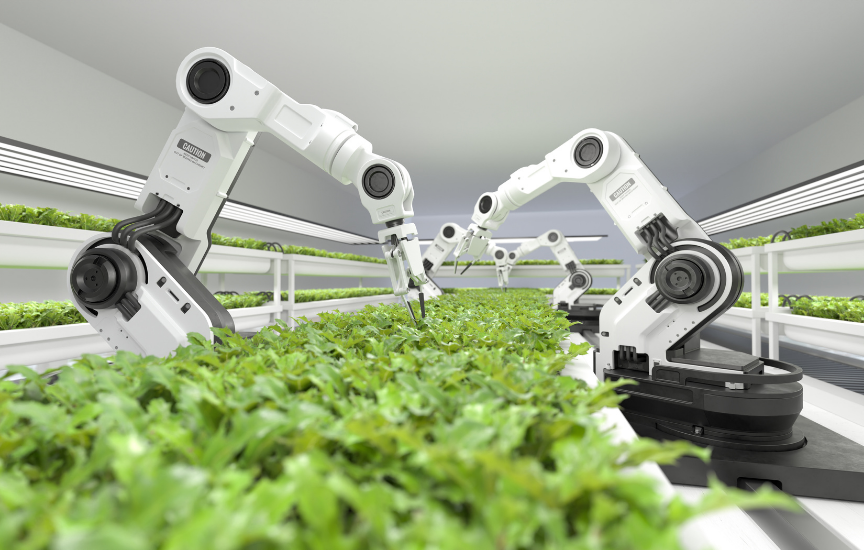
Automation in Crop Production
Automation in Planting and Harvesting
- Mechanized Planters and Seed Drills: Automation has transformed agriculture by enhancing efficiency and reducing labor needs. Mechanized planters and seed drills ensure precise seed placement, improving crop establishment and minimizing input costs. Automated weeding systems are another example of automation in planting and harvesting, helping to control weeds without manual intervention. For instance, Precision Planting’s SmartFirmer integrates real-time soil sensing technology to adjust seed depth and placement based on soil conditions, maximizing seed-to-soil contact and germination rates.
- Automated Harvesters: Automated harvesters have revolutionized grain, fruit, and vegetable harvesting. Automated adjustments in harvesting speed and settings ensure optimal crop retention and minimal grain loss, even in variable field conditions. By reducing reliance on manual labor, automated harvesters enhance operational efficiency, mitigate labor shortages during peak harvesting seasons, and improve overall farm productivity. Case IH’s Axial-Flow® combine harvesters exemplify this advancement by automating the complex process of grain harvesting. These machines incorporate cutting-edge technology such as rotor systems and threshing mechanisms to efficiently separate grains from stalks and chaff.
Smart Irrigation Systems
Smart irrigation systems optimize water use by delivering precise amounts to plant roots based on real-time data and environmental conditions, reducing usage by half compared to traditional methods while ensuring optimal hydration. These systems enhance crop health and productivity while conserving water. By minimizing evaporation, runoff, and the risks of over- or under-watering, they improve water efficiency, promote healthier roots, and increase crop yield and quality. Overall, these innovations support sustainable agriculture, improving crop resilience and minimizing environmental impact. Netafim’s drip irrigation technology exemplifies this approach by providing efficient water delivery through a network of drip lines that deliver water directly to the root zone of plants. By continuously monitoring soil moisture levels and adjusting irrigation schedules accordingly, these systems enhance crop health and productivity while conserving water resources.
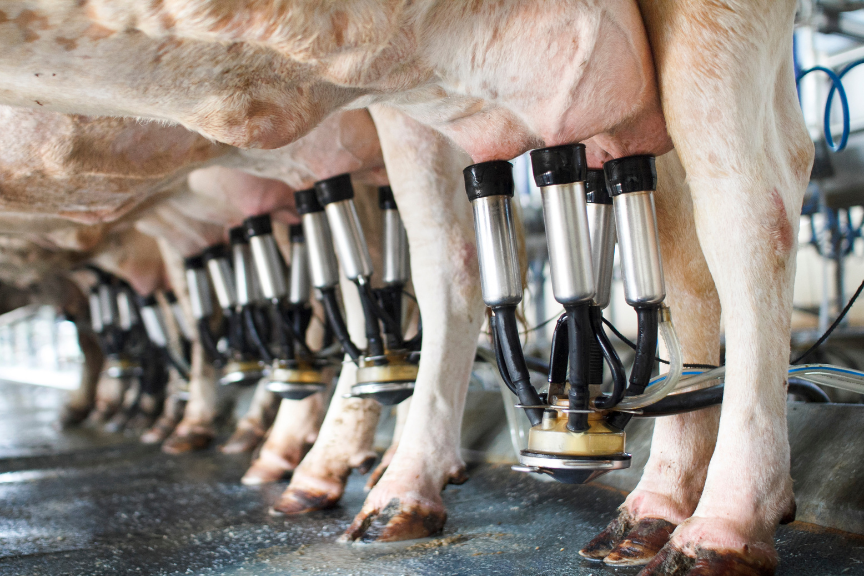
In Livestock Management
Mechanized Feeding, Milking, and Health Monitoring Systems
Automated livestock management systems use mechanical engineering innovations to enhance efficiency, animal welfare, and farm productivity. These systems include mechanized feeding, milking, and health monitoring, reducing labor and ensuring optimal care. Automated climate control systems are another example, maintaining optimal environmental conditions for livestock. For instance, Lely’s Astronaut A5 robotic milking system exemplifies this innovation by automating the milking process. Equipped with advanced sensors and robotic arms, the Astronaut A5 identifies and milks cows individually based on their lactation cycle and milk production levels.
Benefits in Improving Animal Welfare and Farm Productivity
Automated livestock management systems improve animal welfare and farm productivity by optimizing feeding, milking, and health monitoring. Mechanized feeding systems deliver precise portions of feed tailored to each animal’s nutritional needs, promoting optimal growth and health. Automated milking systems enhance cow comfort by allowing cows to choose their milking times, reducing the risk of udder infections and improving overall milk yield and quality. Moreover, continuous health monitoring through sensors enables early detection of health issues, reducing veterinary costs. These systems enhance profitability and promote sustainable, efficient farming practices.
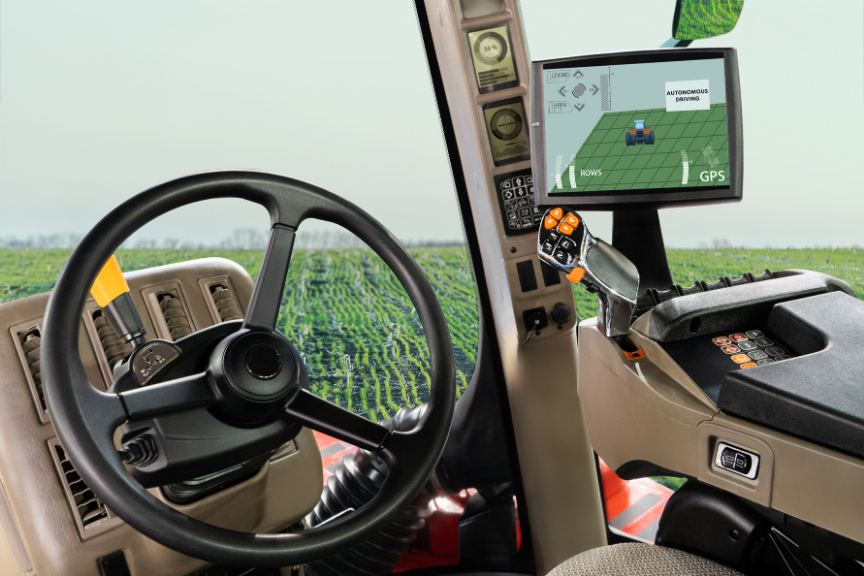
Eco-Friendly Machinery Innovations
Sustainable agricultural machinery focuses on minimizing environmental impact while boosting productivity. Innovations like electric tractors and solar-powered equipment reduce emissions and energy consumption compared to diesel machines, lowering greenhouse gas emissions and fossil fuel dependency. The use of biodegradable materials further reduces the environmental footprint, promoting cleaner, more sustainable farming practices.
Resource-Efficient Technologies
Resource-efficient technologies optimize agricultural inputs like fertilizers and pesticides, reducing environmental impact. Variable Rate Technology (VRT) uses sensors and GPS to apply inputs precisely where and in the amounts needed, minimizing overuse and runoff. Precision irrigation is another method that optimizes water use and reduces environmental impact. This precision enhances crop yield and quality while protecting ecosystems, promoting sustainable and efficient farming.
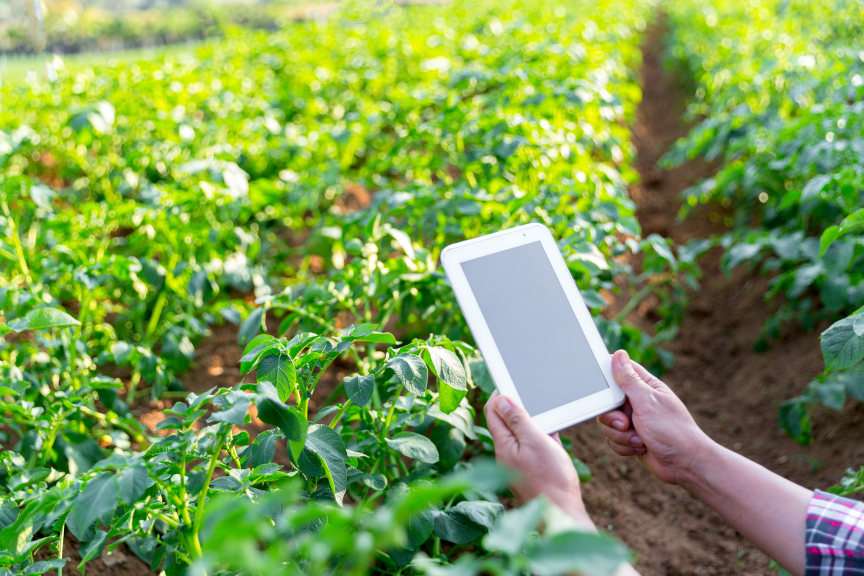
Impact on Global Food Security
Increased Agricultural Productivity and Efficiency
Mechanical engineering innovations drive agricultural development by enhancing productivity and resource efficiency through precision agriculture, automated machinery, and smart irrigation. By accurately delivering water, fertilizers, and pesticides, these technologies boost crop yields, reduce waste, and optimize farm operations, addressing global food security challenges. GPS-guided tractors, drones, and UAVs further increase efficiency in planting, monitoring, and harvesting, while reducing environmental impact.
Reduction in Labor Costs and Dependence on Manual Labor
Automation in farming equipment, including robotic harvesters and automated livestock systems, reduces labor costs and reliance on manual labor. Automated climate control systems are a specific example of automation in livestock management. These systems enhance efficiency, consistency, and productivity, especially in regions with labor shortages or high costs. Mechanized feeding, milking, and health monitoring systems in livestock management also optimize farm operations, improving both productivity and animal welfare.
Enhanced Ability to Monitor and Respond to Environmental Changes
Technologies like drones, UAVs, and smart sensors provide real-time data on soil health, crop conditions, and weather patterns. Remote sensing technology is a key component of these innovations, enhancing the ability to monitor and respond to environmental changes. This allows farmers to quickly adapt to environmental changes, such as adverse weather or pest outbreaks, improving crop resilience and yield. These innovations support more informed decision-making, helping farmers maintain a stable and reliable food supply.
Improved Sustainability of Farming Practices
Sustainable farming practices, supported by mechanical engineering innovations, reduce agriculture’s environmental footprint. Biodegradable materials are a key component of sustainable machinery, further enhancing eco-friendly practices. Precision agriculture, no-till farming, and eco-friendly machinery conserve water, reduce chemical use, and preserve soil health. These technologies ensure long-term food production, promote resilience, and contribute to global food security by maintaining productive farmland for future generations.
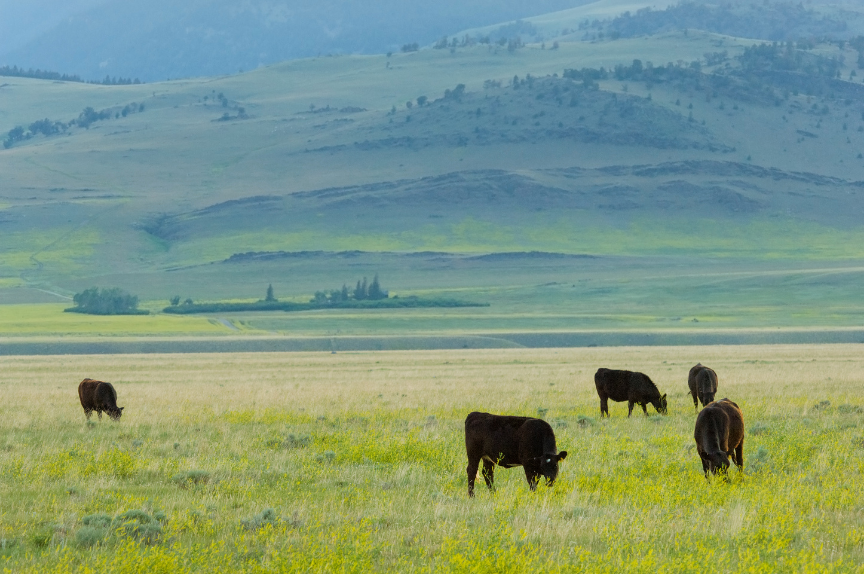
The Future of Sustainable Food Production
Emerging Trends and Technologies
Advancements in technology are transforming agriculture to enhance productivity, sustainability, and efficiency.
Genomic selection optimizes crop and livestock breeding by leveraging genetic data to enhance desirable traits. Precision agriculture integrates drones, satellite imaging, and sensors to provide real-time insights, enabling data-driven decisions that maximize yields and minimize waste.
Vertical farming optimizes land use by growing crops in controlled environments, allowing for year-round production with reduced environmental impact. AI-driven agriculture enhances efficiency through predictive analytics, disease detection, and robotic automation for planting, harvesting, and monitoring.
Water conservation remains critical. Precision irrigation techniques such as drip irrigation reduce waste by delivering water directly to plant roots, ensuring optimal hydration and improving yields.
These innovations are redefining sustainable food production, driving efficiency while addressing global food challenges.
Long-term Implications for Global Food Security
Sustainable food production is critical for global food security. Sustainable intensification enhances productivity while minimizing environmental impact, ensuring a stable food supply—especially in developing regions facing food insecurity.
Beyond yield improvements, sustainable agriculture enhances food quality by reducing contaminants and promoting nutrition, supporting public health. It also drives rural economic growth, creating opportunities for smallholder farmers and reducing poverty.
Additionally, climate-smart farming mitigates environmental impact by lowering emissions, enhancing carbon sequestration, and increasing resilience to climate change. These practices ensure long-term agricultural stability in an evolving global landscape.

Challenges in Implementing Sustainable Agriculture
Economic and Technological Barriers
High upfront costs and limited access to credit hinder the adoption of sustainable agriculture, particularly for smallholder farmers. New technology such as precision agriculture and vertical farming requires significant investment in equipment, infrastructure, and training—expenses many cannot afford.
Technical expertise is another barrier; farmers need training to implement new technology effectively, but access remains limited in underserved regions. Market access challenges further restrict economic viability, as inadequate infrastructure and competition from conventional products make it harder for sustainable goods to reach consumers.
Additionally, climate change disrupts farming operations, increasing risks through extreme weather and shifting growing conditions. Adapting to these challenges is critical for long-term sustainability.
Policy and Regulatory Challenges
Regulatory gaps and lack of incentives hinder the adoption of sustainable agriculture. Weak policy frameworks fail to support farmers in implementing sustainable practices, while inadequate regulations create uncertainty around technologies like GMOs.
Limited public awareness slows adoption, emphasizing the need for education on sustainability’s benefits. Insufficient extension services leave farmers without technical guidance, making transitions difficult. Additionally, trade policies that overlook sustainability can undermine progress. A coordinated approach is essential to drive long-term change.
Conclusion
Mechanical engineering innovations in agriculture, like precision agriculture, GPS-guided equipment, drones, and robotic harvesters, optimize resource use and boost productivity. Biodegradable materials are also becoming a key component of sustainable machinery. Automated systems reduce labor costs and ensure efficient operations, while smart irrigation conserves water and enhances crop health. Sustainable machinery promotes eco-friendly practices and soil health, collectively addressing global food security challenges by ensuring a stable food supply.
The Critical Role of Mechanical Engineering in Addressing Global Food Security Challenges
Mechanical engineering is crucial in addressing global food security by integrating advanced technologies that boost productivity, reduce environmental impact, and enhance farming resilience. Renewable energy sources are also becoming an integral part of sustainable designs in this field. These innovations are key to meeting the growing food demands amid climate change and resource limitations, highlighting the vital role of mechanical engineering in shaping the future of agriculture.
Future Outlook on Continued Innovations and Their Potential Impact on Agriculture
The future of agriculture will be shaped by innovations in AI, machine learning, and robotics, enhancing precision, efficiency, and adaptability. The integration of digital farming and IoT technologies will provide farmers with greater control and insights, driving improvements in productivity and sustainability. As these technologies advance, their impact on global food security will ensure a resilient agricultural system for the future.
For expert guidance in agricultural innovations, book your free discovery call today. We also offer solutions involving renewable energy sources to enhance sustainability. With years of industry experience and a skilled team, we are ready to help you implement sustainable technologies and advanced engineering solutions. Let’s work together to drive the future of agriculture.
